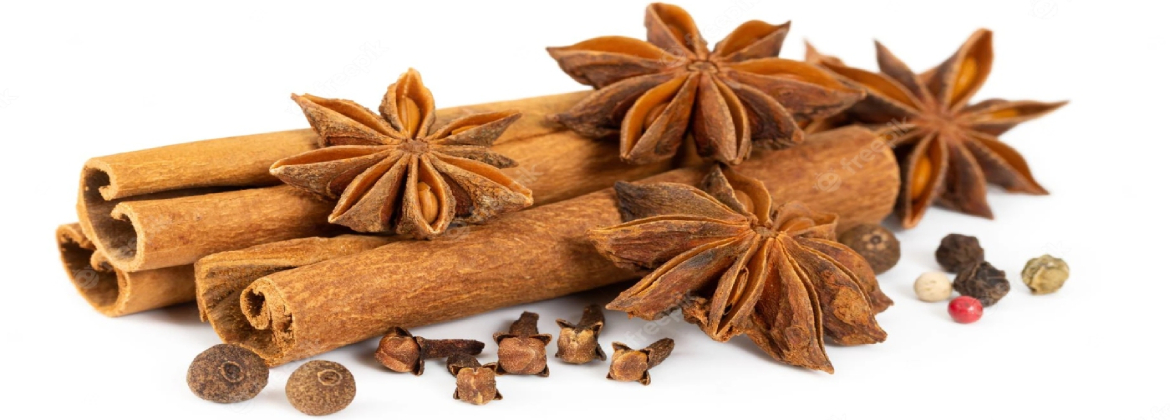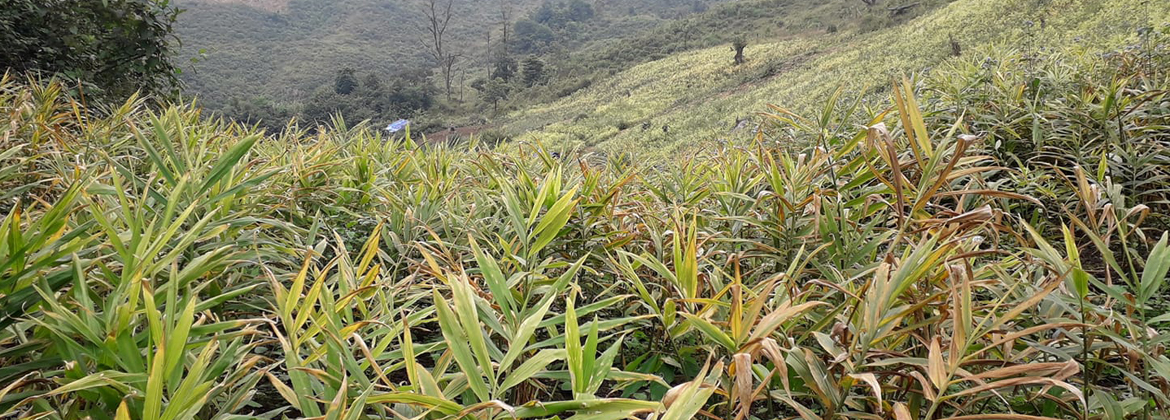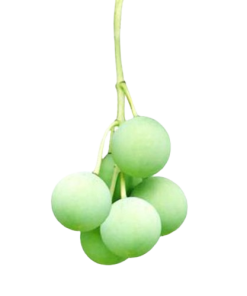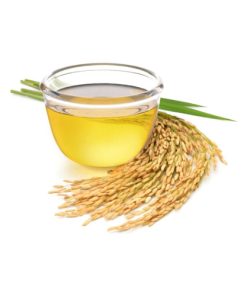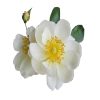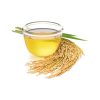GAC FRUIT OIL
Specifications:
Botanical name: Momordica cochinchinansis
Origin country: Vietnam
Part use: Longan of Seed
Extraction: Cold press
Appearance: Clear, Mobile Liquid
Colour: Red – Brown
Specific gravity at 20℃: 0.900 – 0.930
Refractive Index at 20℃: 1.465 – 1.480
Beta carotene ≥ 0,1% (w/w)
Lycopene ≥ 0,2% (w/w)
110 $
Descriptions:
Gac, from the Vietnamese Gấc, scientific name Momordica cochinchinensis, is a species of plant in the melon and cucumber family Cucurbitaceae which is native to Vietnam & throughout Southeast Asia. It is notable for its vivid orange-reddish color resulting from its rich content of beta-carotene and lycopene.
Momordica cochinchinensis is a perennial tendril climber which may reach up to 15 m long and a stem diameter up to 4 cm. The palmate leaves have 3 to 5 lobes and are carried on a petiole (leaf stem) measuring 6 to 10 cm. They are arranged alternately on the stems and measure up to 20 cm wide and long.
This species is dioecious, meaning that male and female flowers are borne on separate plants. The inflorescence on a male plant consists of either a solitary flower or a raceme up to 10 cm long, while female flowers are solitary.
The fruit are ovoid to broadly ellipsoid, about 15 cm long by 10 cm diameter, and are covered with numerous small spines on the skin. They are initially green but turn a deep orange/red at maturity, and they contain numerous irregularly-shaped brown or grey seeds which are enclosed in a bright red aril.
The fruit, seeds, and seed oil contain substantial amounts of beta-carotene and lycopene which collectively impart the characteristic red-orange color to the fruit’s tissues. Both aril and seeds are rich in monounsaturated and polyunsaturated fatty acids with oil containing 69% unsaturated fats, including 35% as polyunsaturated fats. Gac has a high concentration of linoleic acid (omega-6) and omega-3 fatty acids.
Uses
Gac has been commonly used in its native countries, mainly as food and traditional medicine. Its use as a folk medicine dates back over centuries in China and Vietnam. Gac seeds are used for a variety of internal and topical purposes in traditional medicine.
The aril surrounding gac seeds when the fruits are ripe is cooked with sticky rice to make xôi gac, a traditional Vietnamese dish in red color served at weddings and New Year celebrations. In addition, the immature green fruit is also used as a vegetable in India. The spiny skin is removed and the fruits are sliced and cooked sometimes with potato or bottle gourd. In Sri Lanka, gac is used in curry, and in Thailand, gac is served with ice cream.
Due to the high contents of beta-carotene and lycopene, extracts from the fruit’s arils are used to manufacture dietary supplements in soft capsules or are sometimes mixed into beverages.
Momordica oil both supplies and delivers to the body of the high natural levels of antioxidants. Momordica is an natural source of beta-carotene, lycopene, and long-chain fatty acids, and the fat in the fruit pulp is essential for the absorption of those fat soluble nutrients.
Gac Fruit Oil Properties
Appearance: Clear, Mobile Liquid
Colour: Red – Brown
Specific gravity at 20℃: 0.900 – 0.930
Refractive Index at 20℃: 1.465 – 1.480
Main components:
Lycopene ≥ 0,2% (w/w)
Beta carotene ≥ 0,1% (w/w)
Benefits of Gac Oil
High in Vitamin A
Also known as baby jackfruit and sweet gourd, the bright red spiny fruit about the size of a cantaloupe is bursting with powerful antioxidants such as beta carotene and lycopene to boost the immune system and slow down the symptoms of aging. Gấc fruit oil is especially rich in vitamin A and is used in Vietnam to overcome diseases spurred on by a deficiency in the diet of the vitamin.
Vitamin A deficiency can have a serious impact on our health:
1. Night blindness and blindness
2. Inability for the body to fight infections
3. Unhealthy pregnancy and lactation
4. Deceased rate of growth
5. Retarded bone development
6. Lower survival rate after serious illnesses
7. Dry skin, dry hair and broken fingernails
Our bodies do not naturally produce vitamin A so the only way we can get it is though our diet. Momordica fruit oil is a major source of the vitamin.
High in Vitamin E
Momordica oil is rich in other free radical scavengers that put a stop to the damage to the skin that makes it look old and wrinkled. Xeoxanthins and alpha-tocopherol are free radicals and forms of vitamin E contained in the oil. Anti-aging creams are typically saturated with vitamins A and E to prevent the destruction of skin cells that makes it age. The oil from the Momordica fruit is highly prized for its ability to promote youthful, glowing skin. It is the reason Southeast Asian women have beautiful, vibrant skin.
Use Natural Products for Younger Looking Skin
Using natural products for rejuvenating the skin and maintaining a healthy, youthful appearance is a growing trend among celebrities and super models. Natural health is reflected by the skin and is fast becoming preferable over harsh chemical treatments and costly cosmetic surgery. Hollywood celebs are trying to avoid the “frozen” face look that comes with repeated cosmetic surgeries. Momordica oil offers a concentrated, nutrient-rich solution to support glowing, youthful looking skin.
Specification
SPECIFICATIONS
Product Name |
GAC FRUIT OIL |
INCI Name |
Momordica cochinchinansis Oil |
Origin |
Vietnam |
Part use |
Longan |
Method |
Cold press |
Shelflife |
Min 2 years from manufacture date |
CAS # |
8001-79-4 |
No |
PROPERTIES |
SPECIFICATIONS |
01 |
Appearance |
Only liquid |
02 |
Color |
Red brown colored |
03 |
Odour |
Characteristic odour |
04 |
Specific Gravity (g/mL) @ 20°C |
0.900 – 0.930 |
05 |
Refractive Index @ 25°C |
1.470 – 1.480 |
06 |
MAIN COMPOSITION |
|
Lycopene |
Min 2,000 ppm |
|
Beta carotene |
Min 1,000 ppm |
|
07 |
MICROBIAL |
|
Aerobic Mesophilic Bacterial Count |
< 100 CFU/g |
|
Yeast and Mould |
< 10 CFU/g |
|
Candida albicans |
ABSENT / 1g |
|
Escherichia coli |
ABSENT / 1g |
|
Pseudomonas aeruginosa |
ABSENT / 1g |
|
Staphylococcus aureus |
ABSENT / 1g |
|
08 |
HEAVY METAL |
|
Lead (Pb) (mg/kg or ppm) |
< 10 ppm |
|
Arsenic (As) (mg/kg or ppm) |
< 2 ppm |
|
Mercury (Hg) (mg/kg or ppm) |
< 1 ppm |
STABILITY AND STORAGE
Keep in tightly closed container in a cool and dry place, protected from sunlight.
When stored for more than 24 months, quality should be checked before use.
MSDS
MATERIAL SAFETY DATA SHEET
(according to Regulation (EU) No. 1907/2006)
Product name: Gac Fruit Oil
Number: GAC0124
1. IDENTIFICATION OF SUBSTANCE/PREPARATION & COMPANY.
Product name: Gac fruit Oil
Manufacturer/Supplier: Vietnam Essential Oil., JSC
Add: Bai Dai Village, Tien Xuan Commune, Thach That Dist, Ha Noi City, Vietnam
Emergency telephone: +84 903561868
Emergency Contact: Mr. Peter Tron
2. COMPOSITION / INFORMATION ON INGREDIENTS.
Definition/Botanical Origin: The Gac Fruit Oil obtained from the cold press from the Momordica cochinchinensis original Vietnam
Composition: Gac fruit Oil 100% pure & natural
CAS No: 8001-79-4
INCI Name: Momordica cochinchinensis oil
3. HAZARDS IDENTIFICATION:
This product is not hazardous. Not dangerous for the environment.
H304 May be fatal if swallowed and enters airways
H315 Causes skin irritation
H317 May cause an allergic skin reaction
H319 Causes serious eye irritation
4. FIRST-AID MEASURES:
Inhalation: Remove from exposure site to fresh air. Keep at rest. Obtain medical attention.
Eye contact: Rinse immediately with plenty of water for at least 15 mins. Contact a doctor if symptoms persist.
Skin contact: Remove contaminated clothes. Wash thoroughly with soap & water, flush with plenty of water. If irritation persists, seek medical advice.
Ingestion: Rinse mouth out with water. Seek medical advice immediately.
Other: When assessing action take Risk & Safety Phrases into account (Section 15)
5. FIRE FIGHTING MEASURES.
Extinguishing media Use CO2, Dry Powder or Foam type Extinguishers, spraying extinguishing media to base of flames. Do not use direct water jet on burning material.
Special measures: Avoid vapour inhalation. Keep away from sources of ignition. Do not smoke. Wear positive pressure self-contained breathing apparatus & protective clothing.
Extinguishing procedures: Closed containers may build up pressure when exposed to heat and should be cooled with water spray.
6. ACCIDENTAL RELEASE MEASURES.
Personal precautions: Avoid inhalation & direct contact with skin & eyes. Use individual protective equipment (safety glasses, waterproof-boots, suitable protective clothing) in case of major spillages.
Environment precautions: Keep away from drains, soils, surface & groundwaters.
Cleaning up methods Remove all potential ignition sources. Contain spilled material. Cover for spillages: with an inert or non-combustible inorganic absorbent material, sweep up and remove to an approved disposal container. Observe state, federal & local disposal regulations.
7. HANDLING & STORAGE.
Precautions in handling: Apply good manufacturing practice & industrial hygiene practices, ensuring proper ventilation. Observe good personal hygiene, and do not eat, drink or smoke whilst handling.
Storage conditions: Store in tightly closed original container, in a cool, dry & ventilated area away from heat sources & protected from light. Keep air contact to a minimum.
Fire protection: Keep away from ignition sources & naked flames. Take precautions to avoid static discharges in working area.
8. EXPOSURE CONTROLS/PERSONAL PROTECTION.
Respiratory protection: Avoid breathing product vapour. Apply local ventilation where possible.
Ventilation: Ensure good ventilation of working area.
Hand protection: Avoid all skin contact. Use chemically resistant gloves if required.
Eye protection: Use safety glasses.
Work/Hygiene practices: Wash hands with soap & water after handling.
9. PHYSICAL & CHEMICAL PROPERTIES.
Appearance: Mobile liquid
Colour: Red brown color
Odour: Typical Gac Fruit Oil
Specific gravity at 20°C: 0.900 – 0.930
Refractive index at 20°C: 1.470 – 1.480
Lycopene ≥ 2% (w/w)
Beta carotene ≥ 1% (w/w)
Flash point value: 100 °C
Solubility in vegetable oils: Insoluble
Solubility in water: Insoluble
10. STABILITY & REACTIVITY.
Reactivity: It presents no significant reactivity hazards, by itself or in contact with water. Avoid contact with strong acids, alkali or oxidising agents.
Decomposition: Liable to cause smoke & acrid fumes during combustion: carbon monoxide, carbon dioxide & other non-identified organic compounds may be formed.
11. TOXICOLOGICAL INFORMATION.
According to current information, not classed as hazardous to health in normal industrial use.
12. ECOLOGICAL INFORMATION.
Biodegradability: Data not available
Precautions: Prevent surface contamination of soil, ground & surface water.
13. DISPOSAL CONSIDERATIONS.
Avoid disposing to drainage systems and into the environment. Seek expert advice.
14. TRANSPORT REGULATIONS.
Shipping by road (ADR/RID): This product is not considered as dangerous goods
Shipping by air (IATA): This product is not considered as dangerous goods
Shipping by sea (IMDG): This product is not considered as dangerous goods
UN number: not regulated
UN proper shipping name: not regulated
Transportation hazard class: not regulated
Label: Gac Fruit Oil
15. REGULATORY INFORMATION. According to Directive 88/379/EEC
Hazards: Harmful
Symbols: n/a
Risk Phrases: Harmful if swallowed
Safety Phrases: If swallowed seek medical advice immediately and show the container / label
16. OTHER INFORMATION.
Cosmetics Directive – 7th Amendment – Not Restricted
Check maximum usage levels for skin care products.
PACKAGING:
Type |
Suitability |
Glass |
Yes |
Lacquer lined steel/tin |
Yes |
Aluminum |
Yes |
HDPE |
Yes |
SHELF LIFE:
Minimum 36 months from manufacturing date.
Q.C. REQUIREMENTS.
In-line with general product specification. Always satisfy suitability for specific application.
The data provided in this material safety data sheet is meant to represent typical data/analysis for this product and is correct to the best of our knowledge. The data was obtained from current and reliable sources, but is supplied without warranty, expressed or implied, regarding its’ correctness or accuracy. It is the user’s responsibility to determine safe conditions for the use of this product, and to assume liability for loss, injury, damage or expense arising from improper use of this product. The information provided does not constitute a contract to supply to any specification, or for any given application, and buyers should seek to verify their requirements and product use.
Certificate of Analysis
CERTIFICATE OF ANALYSIS
No: GAC0324
Product Name |
GAC FRUIT OIL |
INCI Name |
Momordica cochinchinansis Oil |
Origin |
Vietnam |
Part use |
Longan |
Method |
Cold press |
Batch no |
GAC0324 |
Manufacturing date |
03/2024 |
Best before |
03/2026 |
CAS # |
8001-79-4 |
PROPERTIES |
SPECIFICATIONS |
RESULTS |
Appearance |
Red brown colored liquid |
Conforms |
Odour |
Characteristic odour |
Conforms |
Specific Gravity (g/mL) @ 20°C |
0.900 – 0.930 |
0.915 |
Refractive Index @ 25°C |
1.470 – 1.480 |
1.475 |
MAIN COMPOSITION |
|
|
Lycopene |
Min 2,000 ppm |
2,400 ppm |
Beta carotene |
Min 1,000 ppm |
1,300 ppm |
MICROBIAL |
|
|
Aerobic Mesophilic Bacterial Count |
< 100 CFU/g |
Conforms |
Yeast and Mould |
< 10 CFU/g |
Conforms |
Candida albicans |
ABSENT / 1g |
Conforms |
Escherichia coli |
ABSENT / 1g |
Conforms |
Pseudomonas aeruginosa |
ABSENT / 1g |
Conforms |
Staphylococcus aureus |
ABSENT / 1g |
Conforms |
HEAVY METAL |
|
|
Lead (Pb) (mg/kg or ppm) |
< 10 ppm |
Conforms |
Arsenic (As) (mg/kg or ppm) |
< 2 ppm |
Conforms |
Mercury (Hg) (mg/kg or ppm) |
< 1 ppm |
Conforms |
STABILITY AND STORAGE
Keep in tightly closed container in a cool and dry place, protected from sunlight.
When stored for more than 24 months, quality should be checked before use.
Review
ss




